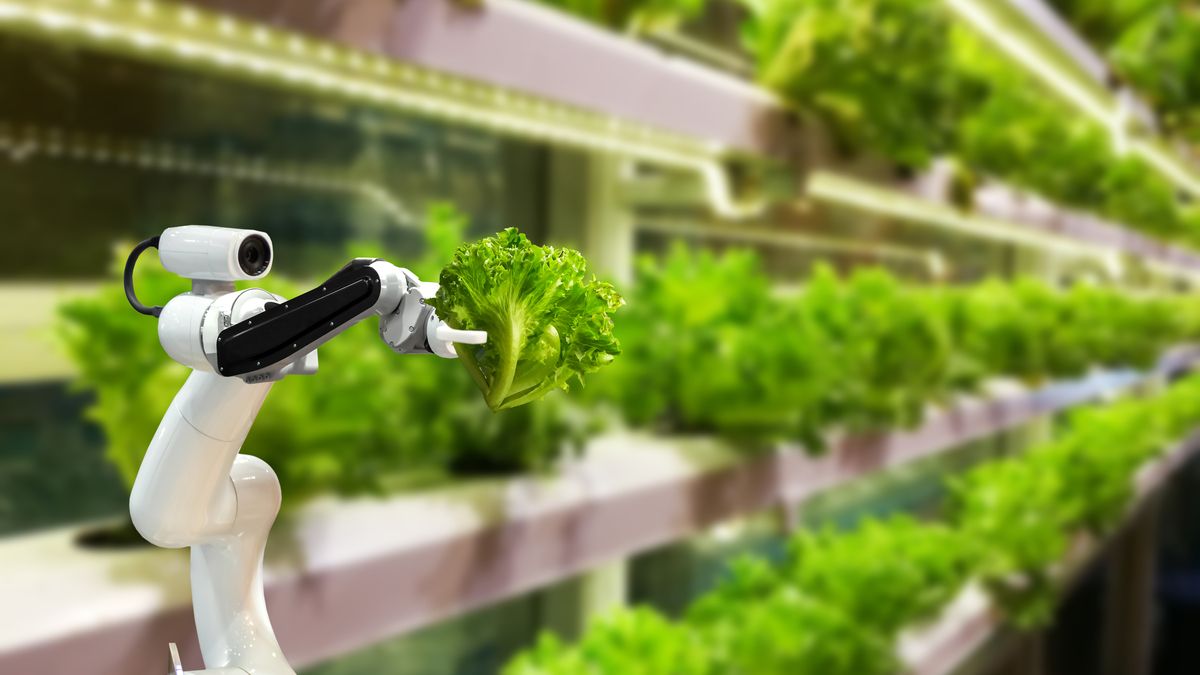

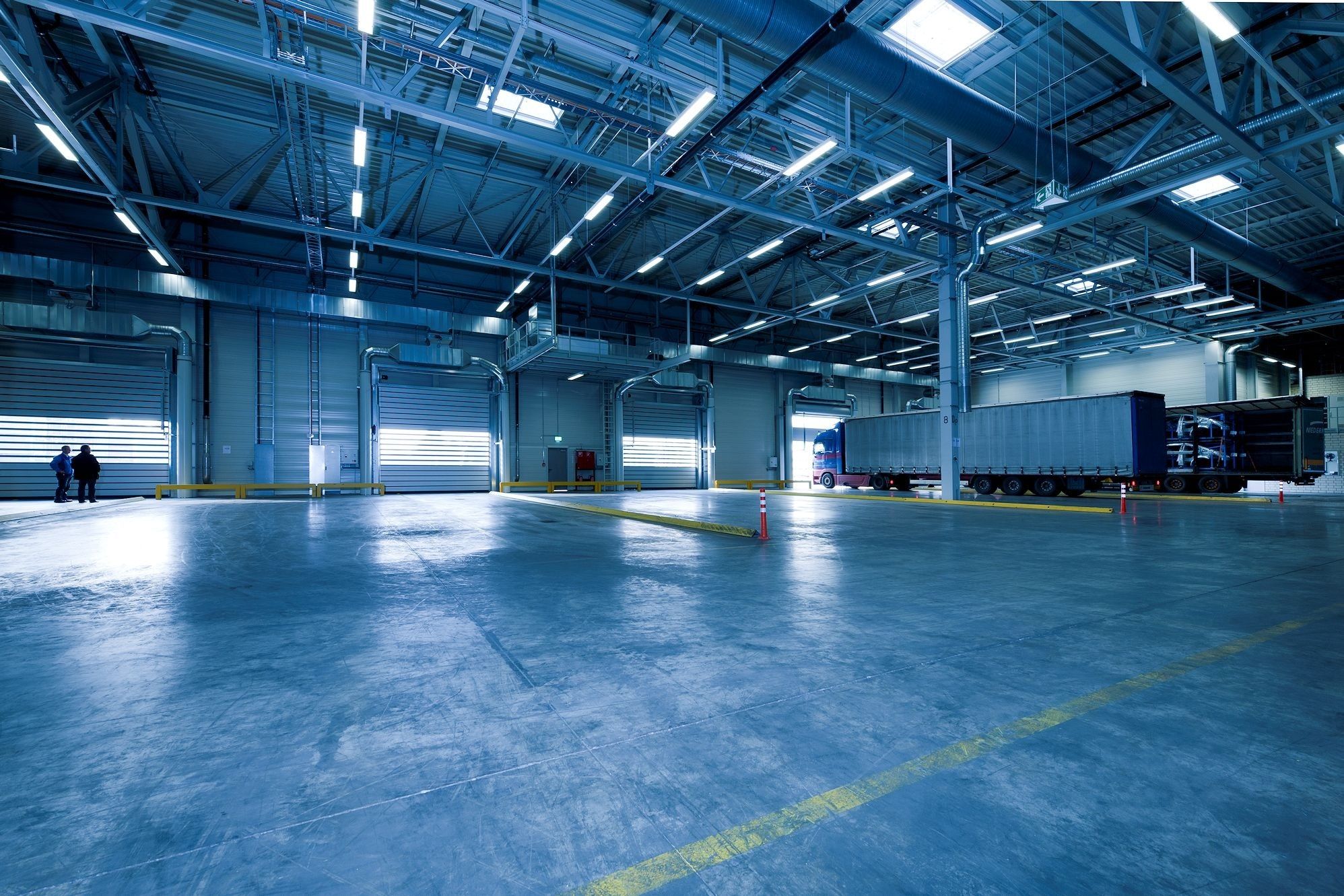
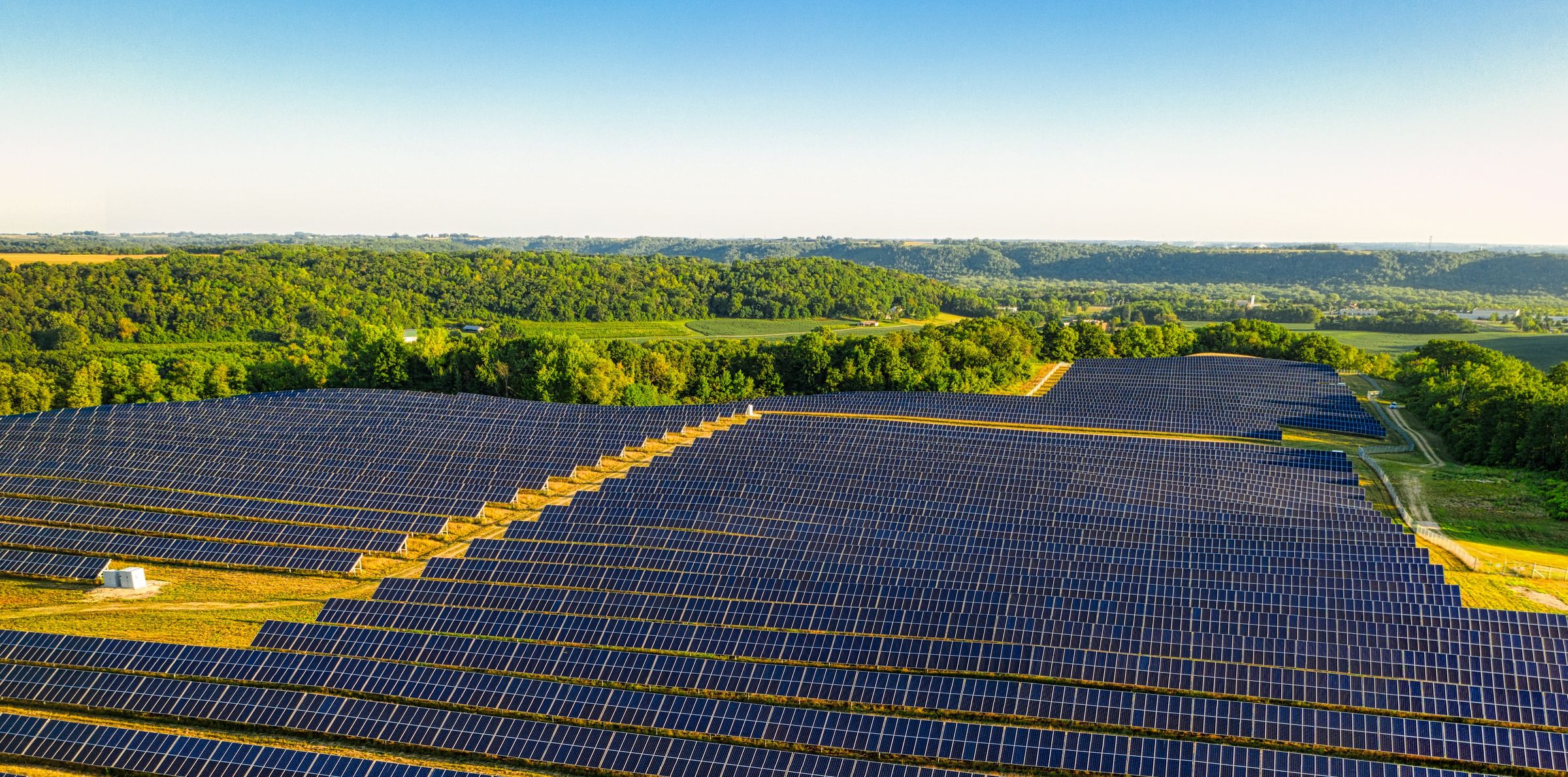
Estonian Industrial Symbiosis Agro-Park (EISAP)
Europe’s most ambitious and sustainable industrial agro-park
Dec 22, 2021

EISAP promises to be home to Europe's most innovative, circular, and sustainable agro-park. The concept centers around a 1500 ha regenerative industrial park and nearby oil-shale power plant in eastern Estonia. It aims to develop a net-zero pathway and significantly boost efforts to move away from a heavily fossil-fuel reliant economy. This development will preserve and revitalize the local environment and provide an essential engine for regional hi-tech development and economic growth.
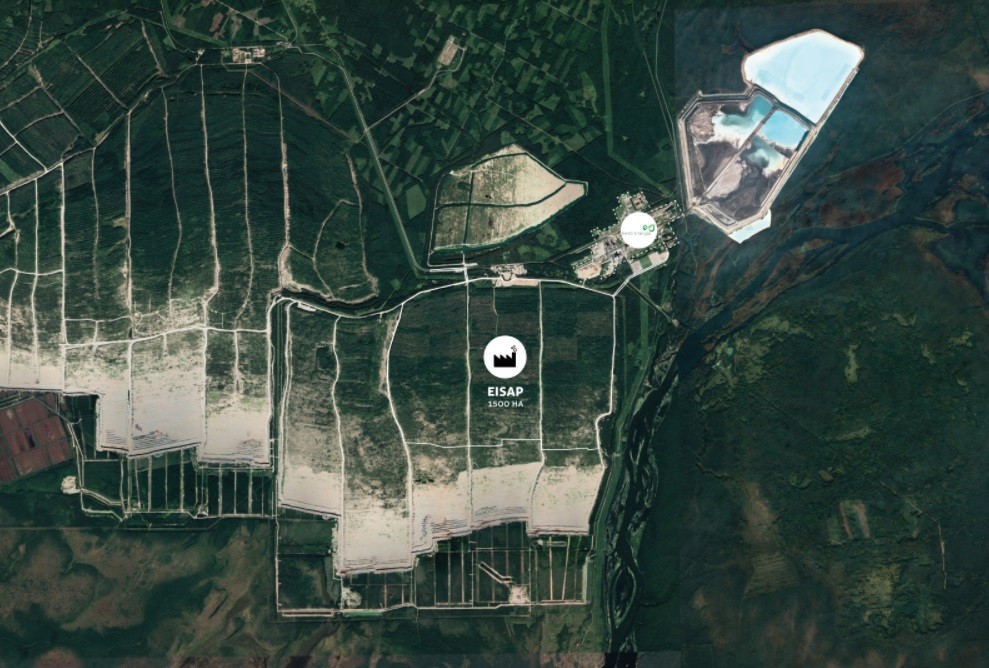
In August 2021, Except Integrated Sustainability and Ida-Virumaa Industrial Areas (IVIA) revealed the EISAP concept master plan, outlining the ambitious but achievable goal of an ecologically-driven, fully sustainable 1500ha industrial agro-park. Located in eastern Estonia's Ida-Viru county, the project collaborates closely with government bodies.
EISAP aims to make considerable contributions to:
This concept creates an inspirational and attractive place for sustainable-minded businesses, manufacturing, and logistic companies to come together and enhance Ida-Viru county's environment and resilience.
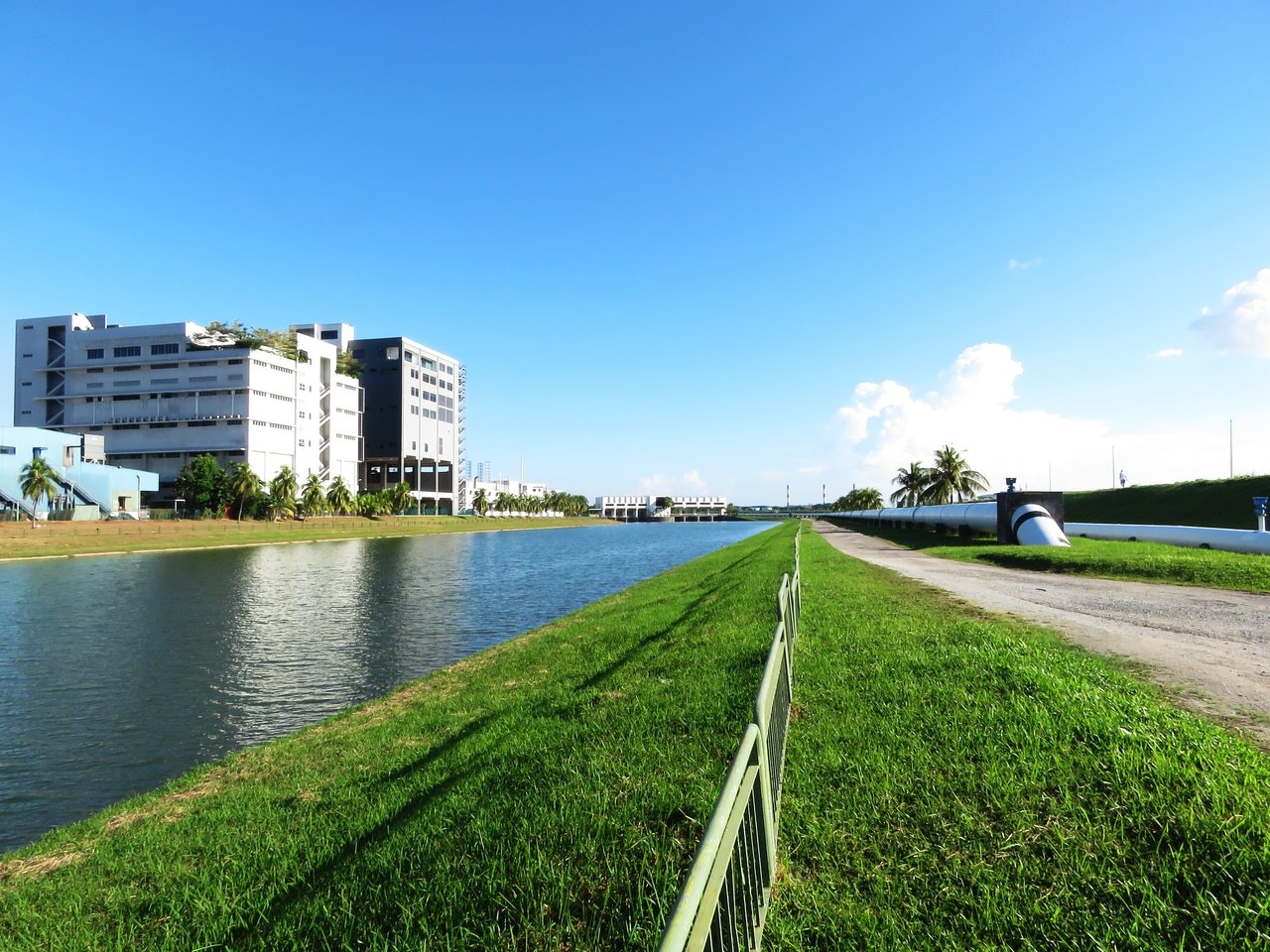
EISAP leads the way with systemic and scalable solutions by applying industrial symbiosis, a practice that upgrades business culture to become more sustainably minded and focused on protecting and enhancing environments. By offering services such as reusing waste or by-products of industry, agro-park's create significant savings in energy, water, and other resources without impacting the ability to profit.
The oil-shale extraction site and power plant adjacent to EISAP ensure this efficient closed-loop and circular resource flow and provide a nearby, reliable, and sustainable energy supply.
Additionally, EISAP will utilize intelligent energy grids, circular economy principles, waste stream, and repurpose emerging food production and innovative growing techniques to create an even more significant impact on reducing industrial emissions and wastage.
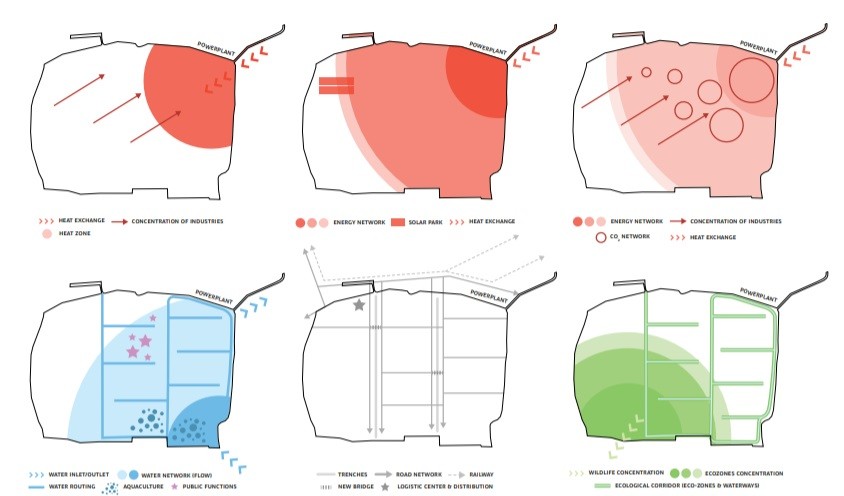
EISAP follows holistic and sustainable design principles to reveal and develop bold solutions to issues specific to the site’s geographic characteristics and the region’s social and economic possibilities.
Located among vast vegetated areas, including Estonia’s most extensive wetlands, the project introduces interventions that rectify the power plant’s impact and improve the area’s ecological value and biodiversity.

The adjacent power plant supplies the park with its base power. In addition to this supply, there will also be a large solar park to generate as much renewable energy as possible, helping to reduce the carbon footprint of the agro-park.
In producing power, the plant also generates and usually releases excessive and unused steam. The EISAP agro-park will contain and reuse this waste and supply industries that require heat in their production. These businesses will be closer to the power plant to optimize production and minimize heat loss.
The agro-park also sequesters and reuses the plant's carbon emissions, improving its footprint, sustainability, and Estonia's overall environmental impact. Similar to the previously mentioned steam reuse, EISAP locates industries requiring high amounts of CO2 closer to the power plant, ensuring a reliable quantity and supply.
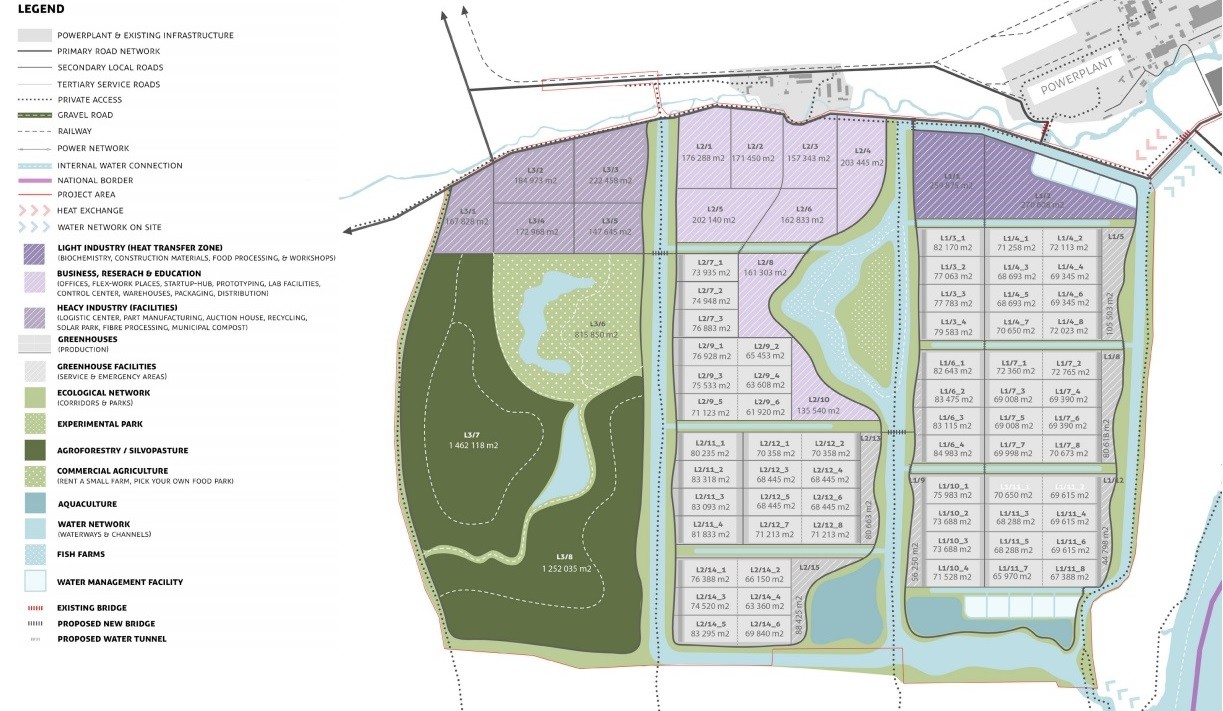
One of the more challenging aspects of EISAP's site were the three 15-meter deep trenches that were leftover from oil shale mining. The argo-park will utilize these features as channels, to help store, direct and treat river water for distribution across the site. An outlet system and site treatment plant will collect and clean agro-park wastewater for reuse in the adjacent power plant while another area houses industrial-scale aquaculture and fish ponds.
Enhancing biodiversity, ecological health, and environmental resilience is a core pillar of EISAP. This goal is only made possible by systemic design of the entire park, including buildings and green space, and setting aside large areas dedicated to preservation.
The main ecological corridors align with the extensive water network to help support all types of vegetation, insects, and animals but also minimize road crossings and disturbances to wildlife.
To the west of the plot lie two large areas set aside for wetlands. This retains and supports the existence of the original local habitat that provides EISAP with ecosystems services, helping to remove pollutants and improve the quality of the water supply.
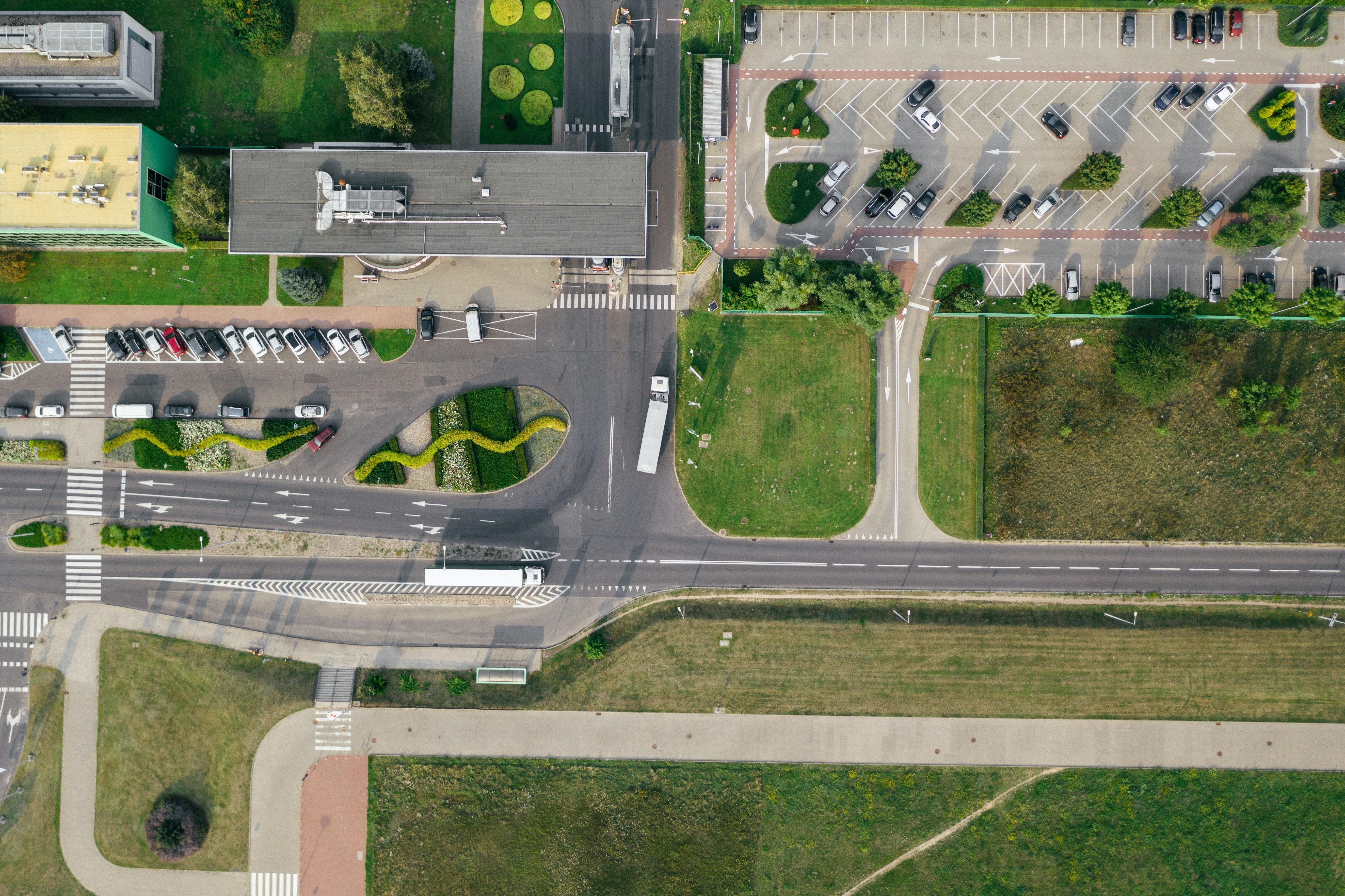
EISAP plans for a crucial logistic area, where both road infrastructure and the existing railway facilitate the mobility of people and goods. Integrating the eco-corridors, offices and other support services, recreational sites, university facilities, and more represent a welcoming atmosphere to EISAP while providing inspiring working environments.
Productive greenhouses, ranging in size, design, and function, cover almost 50% of the entire EISAP site, and almost the entire west plot is dedicated to agroforestry and silvopasture - a mix of forestry and grazing. To embed the park in the local ecosystem, freshwater aquaculture is integrated within and takes various forms, such as running water culture and static water ponds.
Contact us to inquire about our services in designing agro-parks.
Access our online consulting service to get expert advice.
Dec. 22, 2021
Director
Sustainability Research Specialist
Business developer
Head of Urban Planning
Head of Science, Industrial Ecologist
Research and Business Development
Research and Business Development
Strategy and business development
Partnership and Business Developer
Technology and research specialist, physicist